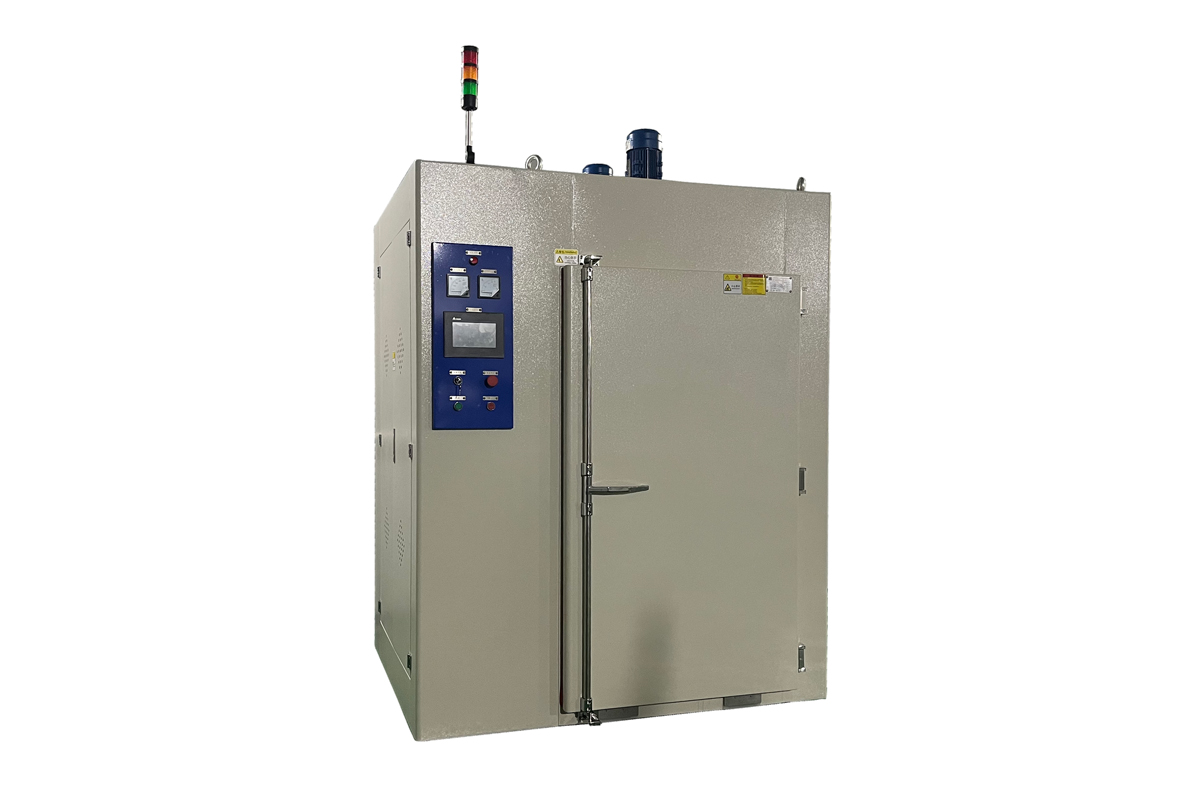Explosion proof Ovens are essential equipment in industries where volatile and hazardous materials are handled. From chemical manufacturing to aerospace and pharmaceutical production, these Ovens are designed to operate safely in environments with flammable gases, vapors, or dust. With the continuous advancement of technology, Explosion Proof Ovens are becoming safer, more efficient, and easier to operate. In this article, we’ll explore some of the latest innovations in explosion proof Oven technology, including smart control systems, remote monitoring, advanced explosion-proof materials, and energy-saving designs.

1. Smart Control Systems: Enhancing Precision and Safety
One of the most significant advancements in explosion proof ovens is the integration of smart control systems. These systems utilize advanced sensors and microprocessors to monitor and regulate the internal environment of the oven with great precision.
Key Benefits of Smart Control Systems:
Enhanced Safety: Smart systems can detect any abnormal conditions, such as temperature spikes, gas leaks, or pressure changes, triggering automatic safety measures to prevent potential hazards.
Precise Temperature Control: Modern control systems ensure consistent and accurate temperature management, crucial for processes that require exact thermal conditions.
User-Friendly Interface: Touchscreen interfaces with intuitive controls allow operators to easily set parameters, view real-time data, and make adjustments, reducing the risk of human error.
Applications: Industries such as pharmaceuticals and electronics benefit greatly from the improved accuracy and safety that smart control systems offer, ensuring high-quality results and operational safety.
2. Remote Monitoring and Automation: Managing Operations from Afar
Remote monitoring and automation are revolutionizing how explosion proof ovens are managed. By integrating Internet of Things (IoT) technology, these ovens can be monitored and controlled from a distance, allowing operators to supervise the oven's performance without being physically present in potentially hazardous environments.
Advantages of Remote Monitoring:
Real-Time Data Access: Operators can receive real-time updates on temperature, humidity, pressure, and other critical factors via mobile devices or computers.
Quick Response: Alerts can be sent to operators when abnormal conditions are detected, enabling immediate action to mitigate risks.
Reduced Downtime: Remote diagnostics can identify issues before they lead to equipment failure, minimizing costly downtime and increasing productivity.
Energy Efficiency: Automated systems can optimize operational parameters based on real-time data, reducing energy consumption.
Applications: Remote monitoring is particularly valuable in large-scale facilities where multiple ovens are in operation, providing centralized control and oversight.
3. Advances in Explosion-Proof Materials: Increasing Durability and Safety
The development of new and improved explosion-proof materials has significantly increased the safety and durability of explosion proof ovens. Modern ovens now incorporate materials that not only withstand extreme temperatures but also offer superior resistance to explosions and impacts.
Notable Material Innovations:
High-Strength Alloys: New alloys are being used to construct oven chambers that can better absorb the energy from an explosion, minimizing damage and enhancing safety.
Heat-Resistant Seals and Gaskets: Advanced materials for seals and gaskets ensure that hazardous substances are contained, even under high temperatures, preventing leaks and enhancing containment.
Explosion-Proof Glass: Toughened and laminated explosion-proof glass allows for observation windows without compromising safety, providing a visual check of the internal environment.
Applications: Chemical and petrochemical industries, where processes often involve highly volatile substances, benefit from these material advancements, leading to safer work environments.
4. Energy-Saving Designs: Efficiency Without Compromise
Sustainability is becoming increasingly important across all industries, and explosion proof ovens are no exception. Recent innovations focus on reducing energy consumption while maintaining high performance and safety standards.
Energy-Saving Features:
High-Efficiency Insulation: Modern insulation materials reduce heat loss, allowing ovens to maintain stable temperatures with less energy.
Variable Frequency Drives (VFDs): VFDs in fans and heating elements enable precise control over airflow and heat distribution, adjusting power usage based on real-time requirements.
Heat Recovery Systems: Some advanced ovens now incorporate heat recovery units that capture waste heat and use it to preheat incoming air, reducing overall energy demand.
LED Lighting: Energy-efficient LED lighting inside the oven chamber reduces power consumption and minimizes heat output compared to traditional lighting.
Applications: Laboratories and production facilities that rely on continuous oven operation benefit from these energy-efficient designs, leading to lower operational costs and reduced environmental impact.
The explosion proof oven industry is undergoing a period of rapid innovation, driven by the need for greater safety, efficiency, and sustainability. Smart control systems, remote monitoring, advanced materials, and energy-saving designs are just some of the technologies propelling the industry forward. These innovations not only make explosion proof ovens safer and easier to operate but also enhance their overall performance, making them indispensable tools in high-risk environments.
As industries continue to evolve, the future of explosion proof ovens looks promising, with ongoing research focusing on even more advanced materials, automation, and environmentally friendly solutions. These innovations will undoubtedly continue to improve safety standards and operational efficiency, making explosion proof ovens more reliable and effective in meeting the demands of modern industry.
For companies handling hazardous substances, investing in these innovative technologies not only ensures compliance with strict safety standards but also enhances productivity and reduces operational costs—a win-win for safety and efficiency.








